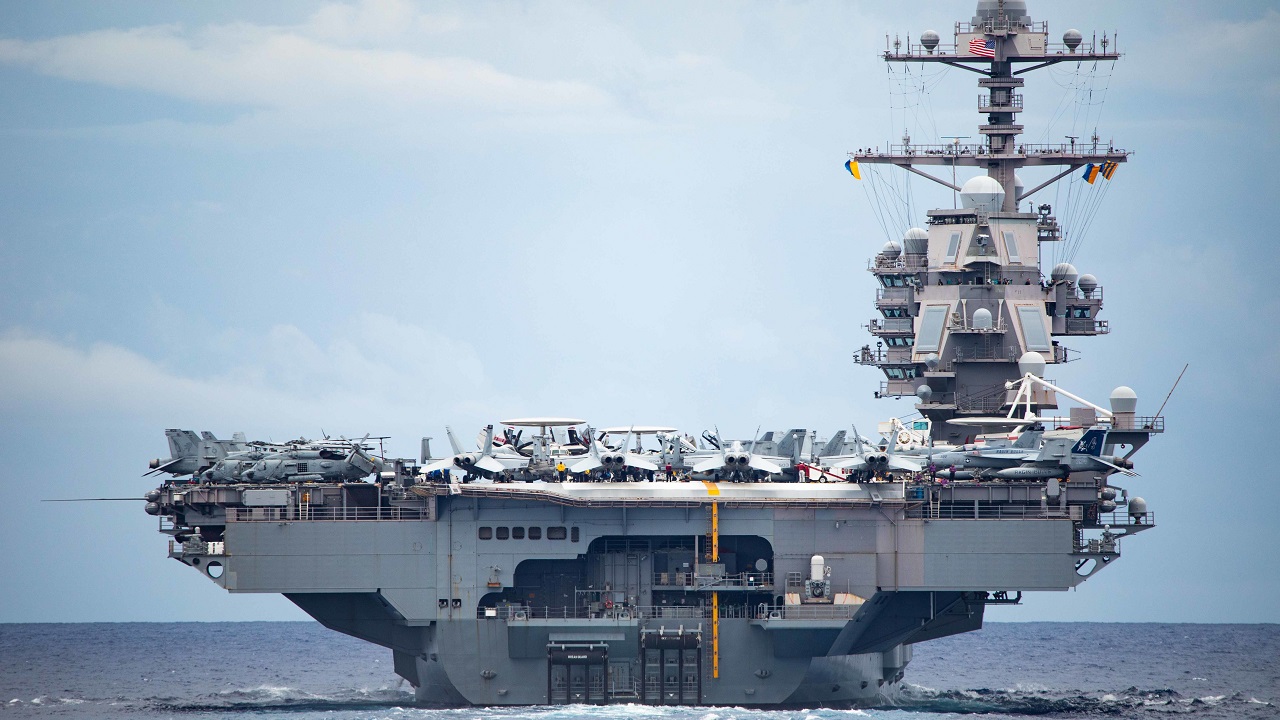The French Navy and the US Navy are embarking upon a collaborative effort to accelerate and streamline aircraft carrier modernization and development, in considerable measure related to French plans to launch its second carrier by 2037.
The “PANG,” France’s next aircraft carrier, is due to hit the ocean in 2038, the same year its only aircraft carrier, the Charles de Gaulle, is slated to retire. Mock-ups of the PANG reveal a modern-looking, flat-deck carrier with a single island and extended front runway deck. The island on the PANG is set farther back than how it appears on the Charles de Gaulle, yet the overall shape and configuration do look similar.
France and America: An Aircraft Carrier Alliance?
The US-French collaborative effort is significant as it enables bulk buys of equipment and key components to lower costs and streamline acquisition.
Specifically, the collaborative effort centers upon key technologies built into the US Navy’s Ford-class aircraft carriers, such as the Electro-Magnetic Catapult.
Much like the Ford-class, the new PANG will be nuclear-powered and incorporate EMALs and Advanced Arresting Gear.
EMALs is an advanced technology that first appeared on the USS Ford; it is now operational and has successfully launched fighter aircraft from the flight deck.
EMALs enable a smoother take-off, create less “wear and tear” on the aircraft, and enable a more efficient and faster-paced sortie rate.
Years ago, an expert Navy engineer explained that EMALs generate a smoother, steadier take-off than the “shot-gun” type of launch created by a traditional steam catapult. Instead, EMALs use a rolling magnetic field to generate smoothly applied propulsion power.
Acquiring larger numbers of EMALs and AAGs is extremely advantageous to both the French and US Navy because a larger volume buy can support production capacity and lower prices.
General Atomics, the maker of EMALs, will be better positioned to do more efficiently and successfully build the systems. Combined acquisition can also support technological synergy and cooperation between France and the US.
US-France Aircraft Carrier Collaboration
Collaborating on carrier development also makes great sense because aircraft carrier construction is extremely complex and challenging.
The US Navy experienced this challenge when first building the USS Ford and trying to integrate a new suite of advanced technologies. The maturation and integration of EMALs on the USS Ford were not without setbacks and technological challenges.
Yet, the Navy ultimately succeeded with its cutting-edge effort to deploy a paradigm-changing new generation of air-attack launch technology.
Moving forward, there is also longer-term strategic and tactical value associated with French and US technological collaboration, as it will likely support operational interoperability between the two countries’ maritime warfare operations.
This would enable joint, dual-carrier operations and streamline joint, multi-national air attack campaigns. In a clear initial sense, this multi-national carrier formation would allow attack operations to “scale” any potential maritime air-attack campaign.
The US Navy has, on several occasions, conducted “dual-carrier” training operations in the Pacific to solidify collaborative attack missions on a much larger scale. If communication is established and secure in support of coordinated air-launches, an ocean-launched air campaign could double or even triple in size.
This would likely prove extremely critical in the event that the US and allied forces needed to engage in great-power warfare against Russia or China. A French carrier capable of seamlessly integrating with a Ford-class US Navy carrier could double an air attack campaign from the Baltic Sea or Mediterranean if needed.
Along with EMALs synergies, the PANG and Ford-carriers would also be well-served to align transport layer communications technologies such that radar, RF signals, and datalink frequencies can be synchronized to enable secure, seamless data sharing across both Carrier Air Wings.
Ford-Class Aircraft Carrier Photo Essay
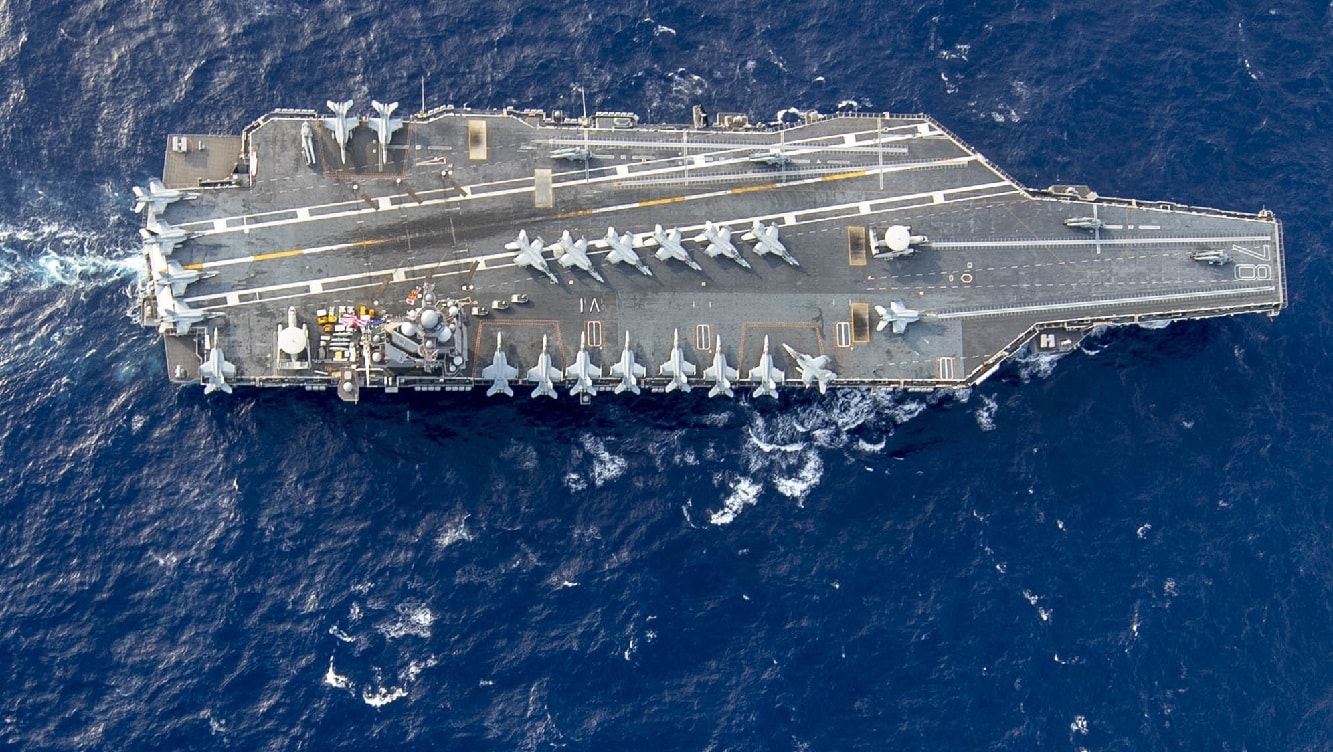
The Ford-class aircraft carrier USS Gerald R. Ford (CVN 78) and the Nimitz-class aircraft carrier USS Harry S. Truman (CVN 75) transit the Atlantic Ocean June 4, 2020, marking the first time a Ford-class and a Nimitz-class aircraft carrier operated together underway. Ford is underway conducting integrated air wing operations, and the Harry S. Truman Carrier Strike Group remains at sea in the Atlantic as a certified carrier strike group force ready for tasking in order to protect the crew from the risks posed by COVID-19, following their successful deployment to the U.S. 5th and 6th Fleet areas of operation. (U.S. Navy photo by Mass Communication Specialist Seaman Riley McDowell)
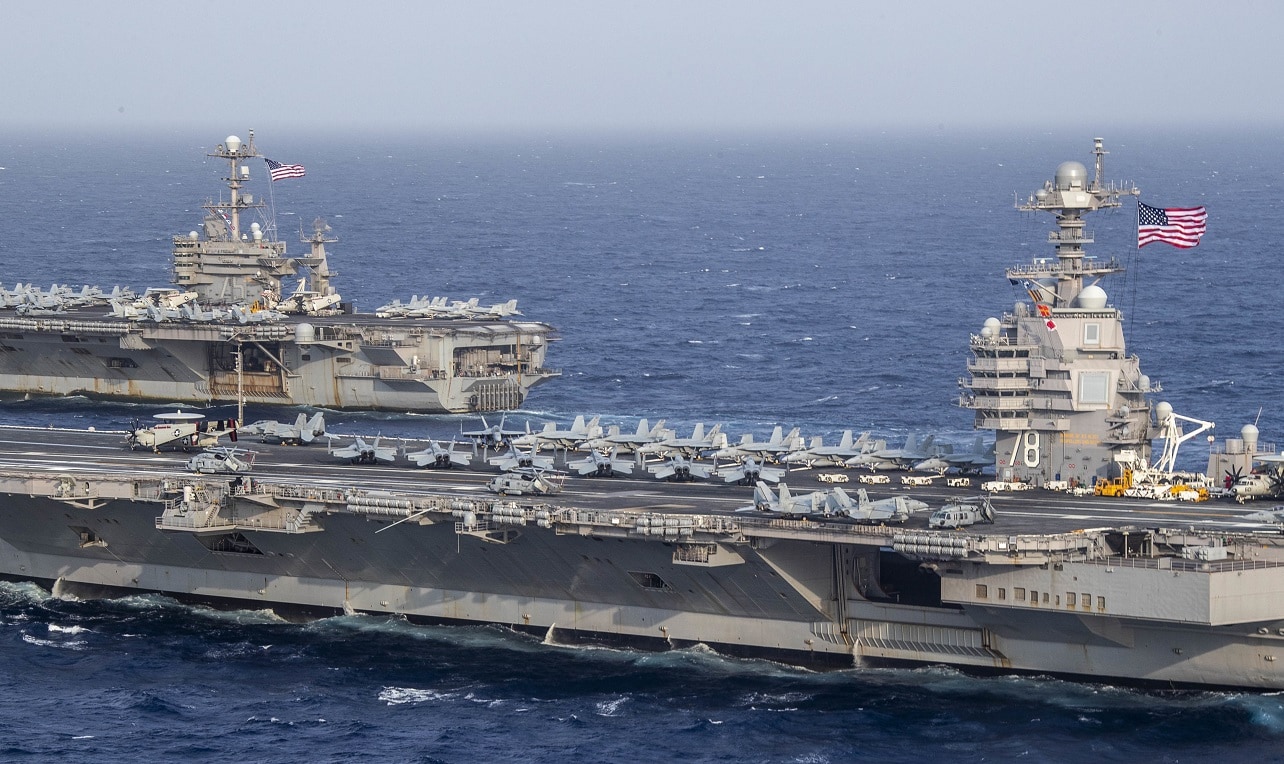
The Ford-class aircraft carrier USS Gerald R. Ford (CVN 78) and the Nimitz-class aircraft carrier USS Harry S. Truman (CVN 75) transit the Atlantic Ocean June 4, 2020, marking the first time a Ford-class and a Nimitz-class aircraft carrier operated together underway. Ford is underway conducting integrated air wing operations, and the Harry S. Truman Carrier Strike Group remains at sea in the Atlantic as a certified carrier strike group force ready for tasking in order to protect the crew from the risks posed by COVID-19, following their successful deployment to the U.S. 5th and 6th Fleet areas of operation. (U.S. Navy photo by Mass Communication Specialist Seaman Riley McDowell)
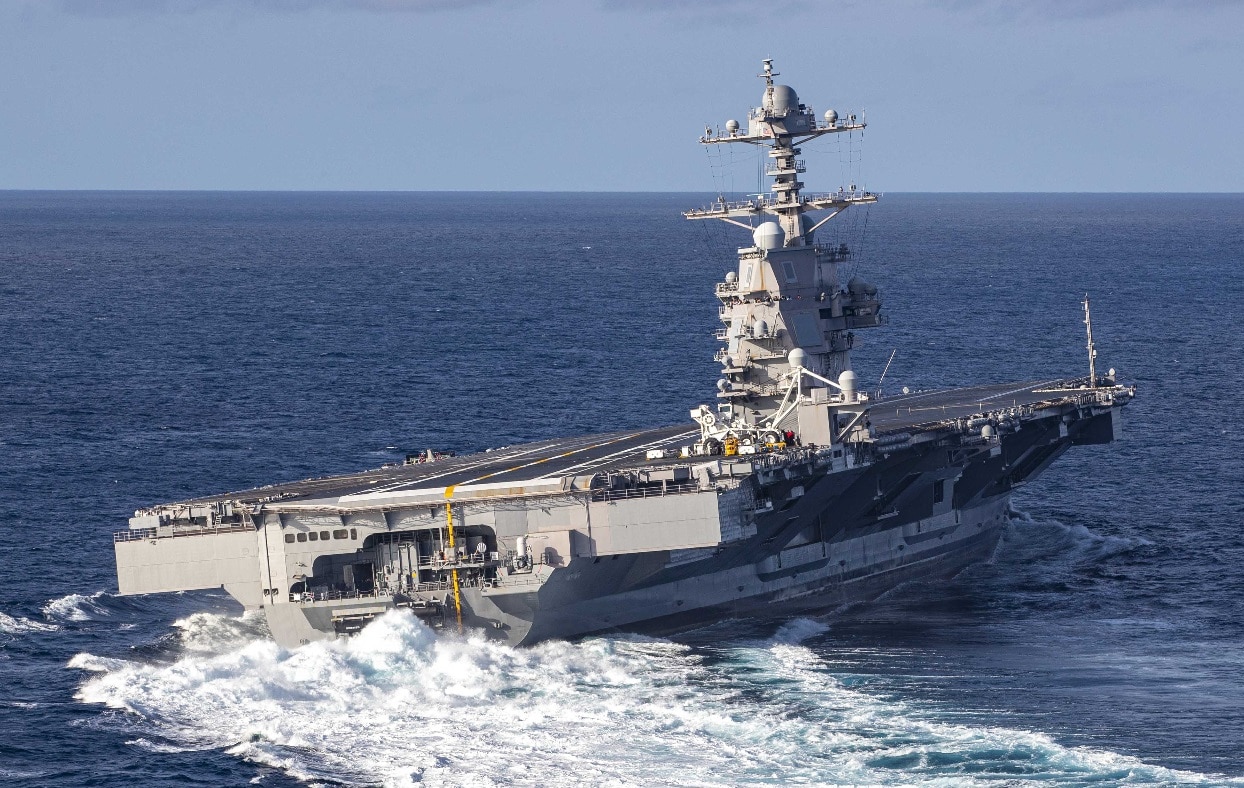
ATLANTIC OCEAN (Oct. 29, 2019) The aircraft carrier USS Gerald R. Ford (CVN 78) conducts high-speed turns in the Atlantic Ocean, Oct. 29, 2019. Gerald R. Ford is at sea conducting sea trials following the in port portion of its 15-month post-shakedown availability. (U.S. Navy photo by Mass Communication Specialist 3rd Class Connor Loessin/Released)191029-N-YW238-1322

Gerald R. Ford-class. Image: Creative Commons.
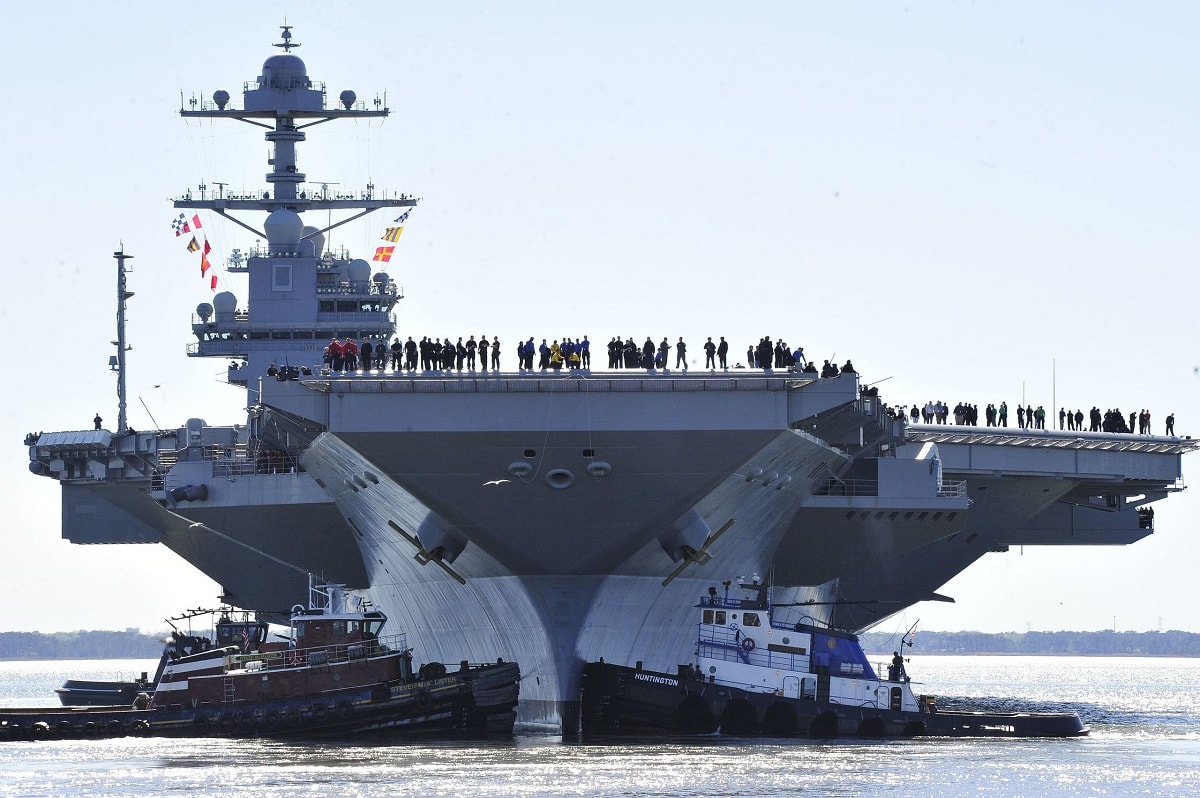
USS Gerald R. Ford. Image: Creative Commons.
About the Author: Kris Osborn
Kris Osborn is the Military Technology Editor of 19FortyFive and President of Warrior Maven – Center for Military Modernization. Osborn previously served at the Pentagon as a highly qualified expert in the Office of the Assistant Secretary of the Army—Acquisition, Logistics & Technology. Osborn has also worked as an anchor and on-air military specialist at national TV networks. He has appeared as a guest military expert on Fox News, MSNBC, The Military Channel, and The History Channel. He also has a Masters Degree in Comparative Literature from Columbia University.

